Why doesn't the pear bear fruit and what to do?
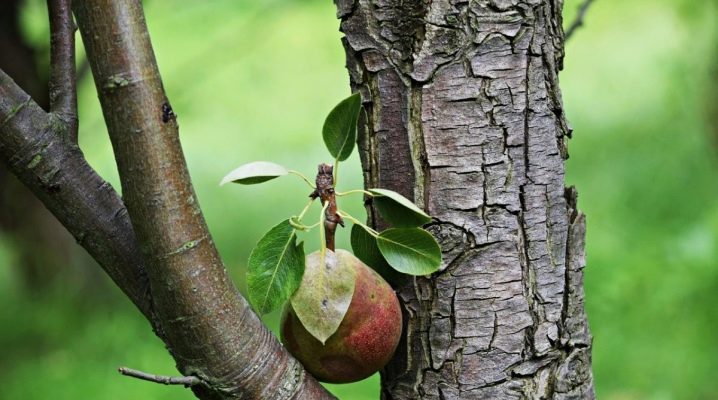
Gardeners often face the problem of low yields of fruit crops. There are several reasons for this, knowing about which, you can find a way out on your own. The pear is a fairly popular fruit tree, but it is distinguished by its capriciousness. This plant requires careful maintenance, with many subtleties to be considered. If the pear yield in the garden is not as good as we would like, then the information provided below will help to quickly find the cause and positively solve the problem.
Main reasons
The pear is a very wayward tree that often freezes in winter and is exposed to various diseases in summer. For these reasons, not everyone wants to plant such a plant. Gardeners complain that after planting, many seedlings do not develop for a long time, do not grow or bloom, and they have to wait for a good harvest for years. In some cases, the pear ceases to bear fruit altogether.

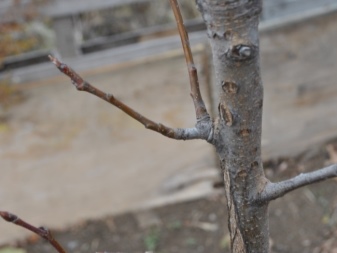
Let's consider the main reasons for such phenomena.
Age
This is one of the common reasons. At a young age - up to 6-8 years old - with proper care and high-quality source material, plants develop well, their root system, like the branches, strengthens from year to year, a dense green mass is observed, which ensures fruiting. But if the tree is 10 or more years old, a rich harvest, most likely, should not be expected.
In addition to age, the varietal peculiarity of the plant can also be the reason. If there is a tree in the garden that has been bearing fruit for a long time, and then abruptly ceased, perhaps the reason lies in ordinary aging, since any plant has its own active periods. However, the pear belongs to the category of fruit trees, whose harvests can delight the owners for half a century. In this case, you first need to understand the variety and age of the tree.
Some varieties of pear may not begin to bear fruit immediately, but after 5 or even more years. You shouldn't chop down the tree right away, you just need to wait, unless, of course, other reasons are found.
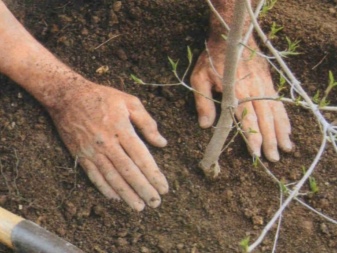
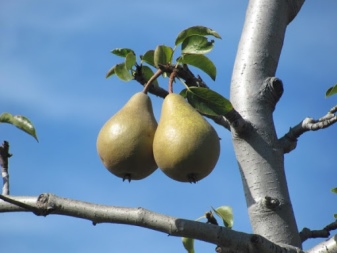
Sometimes the wrong planting leads to a lack of harvest, in which case it is necessary to clean up the soil at the trunk and free the neck. The wedge-shaped pear begins to bear fruit 2 years after planting, but in this regard, it remains active only until the age of 10-15 years, after which it no longer yields.
Excess ovaries
This may be another reason for the lack of fruiting. With the onset of spring, the trees in the garden begin to bloom and pollinate profusely. Favorable weather encourages the formation of ovaries, but the plant can shed them. If the soil is fertilized too much or the moisture level is higher than necessary, the tree begins to be "lazy": it does not want to bear fruit. If a large number of flowers and ovaries have appeared, there is no doubt that they will delay the growth of leaves with shoots, photosynthesis will deteriorate.
The plant will lack nutrients, so it is necessary to manually thin out the ovaries, since the pear does not always cope on its own.
Please note that the fruits should be approximately 15 cm apart. If there are too many of them, the resistance of the garden tree to winter decreases, which is fraught with loss of harvest for the next year.
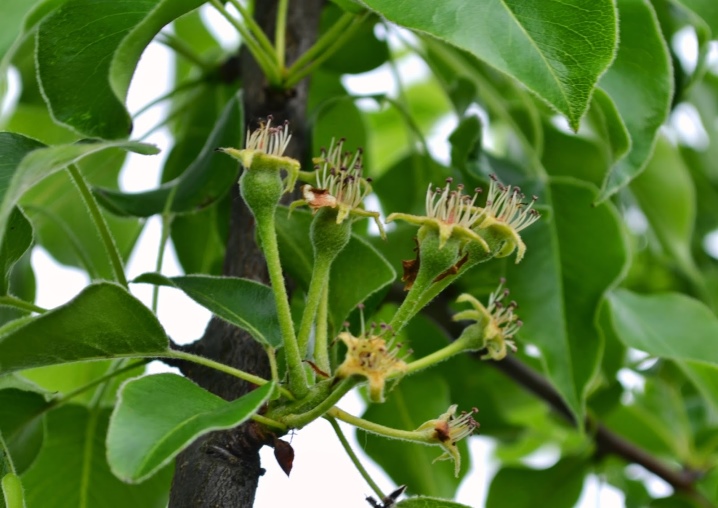
No pollinator
It is better to plant garden trees not in a single copy, as they need pollination. You can start with two trees, with one of them serving as a pollinator. Bees with other insects certainly play an important role here.Without these little helpers, it becomes almost impossible to get a harvest of any crop.
The flowering periods of the varieties must be the same. If there are no insects on the site, you can artificially pollinate using a brush. This method is quite effective, although it takes away precious spring time from gardeners.

Bad place
Before planting any fruit tree, you must carefully select a place for this. Each plant has its own requirements for growing conditions. As for the pear, it loves well-lit areas, and it is also important to take care of protecting it from strong winds. If the tree is not bearing fruit, it may be in a draft.
Soil type significantly affects the state of the crop. The choice of a place should be carried out according to such characteristics as the degree of swampiness, moisture level, acidity, and so on. If there is a lot of moisture in the soil, the roots will begin to rot, and the groundwater will completely wash out all the nutrients from the soil.
The pear is not afraid of the average acidity of the soil, on the contrary, such conditions develop its resistance to certain diseases, for example, to scab.

Damage to young branches
As mentioned above, strong winds can disrupt the full development and even the integrity of young trees. In winter, heavy precipitation is observed, therefore, in windy weather, the branches, being under a snow or ice mass, are unlikely to be able to withstand the load from the wind. Thus, it is important to protect the plant from possible damage.
Experienced gardeners always monitor the condition of young trees, shake off snow from them and cut off unnecessary branches.
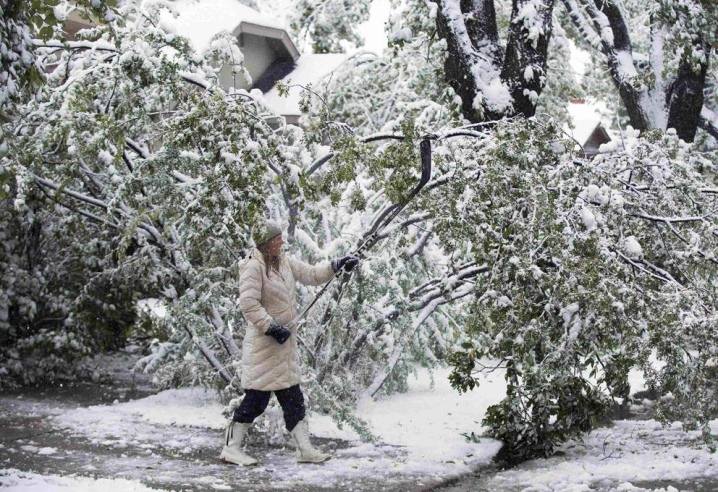
Improper care
Perhaps one of the most common reasons for the lack of fruiting in pears is the inept actions of the garden owners to care for them. The pear is a fairly tall tree with dense branches, which requires special rules of grooming. The plant needs careful pruning, thinning the garden space nearby, otherwise the flowers will not be able to set, and insects will pollinate them.
Care must be taken carefully and seriously. Pruning the tree itself is very important, but you cannot overdo it so that the plant does not weaken. There are major branches that should not be removed. You can only eliminate those that grow inside the crown.
If the pear has a lot of dry and old branches, they must be removed immediately, as they can harm healthy branches that will bear fruit next season. With proper pruning, light and air will flow unobstructed.
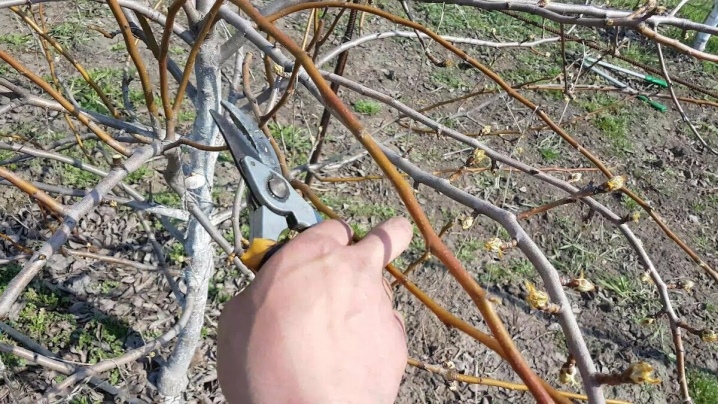
Weather
Negative climatic conditions often affect the condition of garden trees. If the plant is not protected from frost and wind, then there will be much less fruit or even no fruit at all. This is especially true for early varieties that begin to bloom as early as May.
If the buds are ripe and the outside temperature is below 5 degrees, the yield will be weak. The pear variety must be selected for a particular region, taking into account the weather conditions. In the south, early-ripening varieties bear fruit well, but if the garden is located in the northern regions of the country, you should pay attention to winter and autumn crops. In addition, such varieties of pear varieties are presented in a wide range.
Rains with strong winds easily pluck flowers from trees, but in this case it is almost impossible to be completely safe. Therefore, it is better to choose not an open place for planting pears, but somewhere in a quiet corner of the garden, closed on one side by a blank fence or protected from the winds by natural plantations. Lack of lighting also negatively affects the further development of the fruit. Moreover, they will not be very sweet.
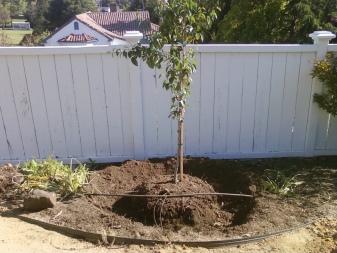

Diseases
If fungal or other diseases of garden trees are not treated in time, the fruits will either not appear at all, or there will be very few of them. The problem also arises in those cases when they do not consider it necessary to feed the soil with fertilizers.
For example, a lack of nitrogen stops the growth of leaves, and fewer growths appear on the tree. But if you use the appropriate drugs or manure, the problem will be solved.
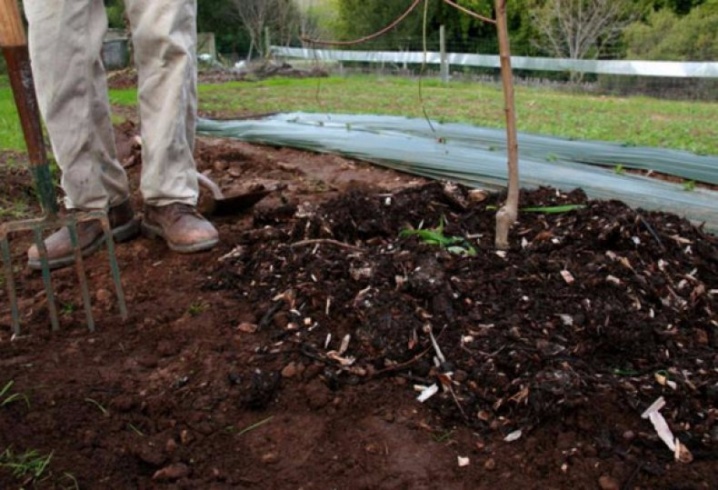
Pests
A pear will not bring a lot of harvest if it is attacked by pests that affect the buds on the branches at the stage of development. Experts recommend using the "Alatar" product, which copes with pear copper. If the moth is worried, penetrating deep into the ovary and eating the chamber with seeds, the plants are treated with "Ivanhoe".
The treatment should be done at the end of spring and repeated two weeks after the first procedure.
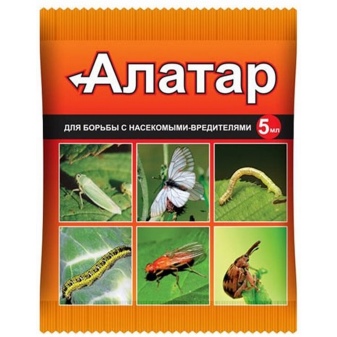
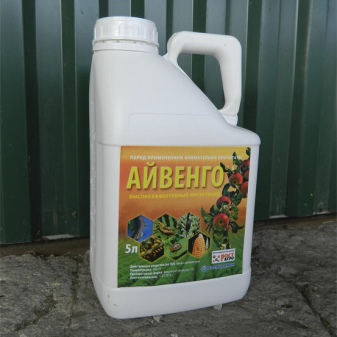
How to solve the problem?
If the gardener is interested in eliminating the problem of the lack of yield of fruit trees, then there are several solutions that will help to make even an old pear bear fruit. You can independently accelerate the result and delay the periods of aging and death of the plant. And it's not so important whether a young or an adult pear - you need to learn how to properly care for any tree and deal with any problems at the initial stage.
If there is no pollinator on the site, the problem can be solved as follows. Before planting trees, you need to pick up several varieties of fruit at once in order to ensure cross-pollination. This method has already proven its effectiveness in practice. The distance between the rows should be at least 4 m. And you also need to find a pollinator tree, which is quite enough for 12 acres.
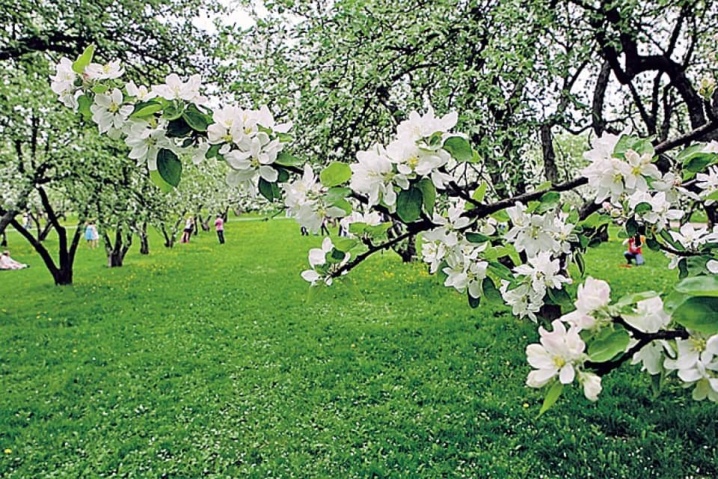
If you plan to plant several varieties, you need to make sure that they bloom at the same time (this will ensure full pollination).
If possible, hives with bees are placed near the garden. Bees are the ideal way to ensure rich flowering, which will certainly increase yields.
If trees have already been planted on the purchased site, but in violation of some rules, you can make a transplant. True, this should be done carefully, given the fact that the pear does not like such events. It is better to transplant in spring or autumn, but it all depends on climatic conditions and other factors. Such manipulations are best experienced by young trees up to 3 years old. Older trees will have to tinker a lot, since their root system goes quite deep into the soil. You need to carefully dig in so as not to damage anything.
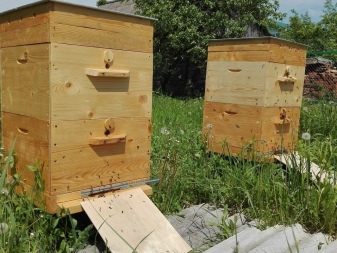

Useful Tips
A few tips will not get in the way of a budding gardener.
- To increase yields, you should loosen the soil under each tree more often. In this case, the roots will be better saturated with oxygen.
- If the season is dry, it is important to ensure good watering. After each watering, it is useful to mulch the soil surface to keep moisture longer.
- Fertilizing plays an important role. It is enough to use compost or mineral fertilizers, the introduction of which should be combined with loosening.
- For one pear, you need to add 5 kg of manure after 2 years and about 50 g of superphosphates.
- As for other manipulations, any garden tree before winter must be protected from frost and pests. To do this, it is recommended to dig in, eliminate all pests, cut off excess and diseased branches in a timely manner, plant a productive variety and moisten the ground. Do not forget to insulate the root system before the cold weather.
- If there is a lot of sorrel or horsetail on the site, then this indicates an increased acidity, which can be neutralized with lime. It will be enough to add 200 g of substance per 1 sq. meter.
By applying all of the above recommendations, you can get amazing results next season.
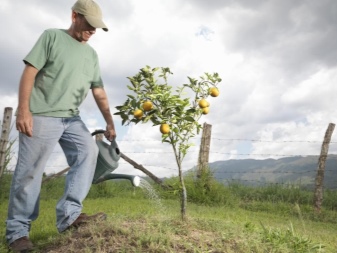
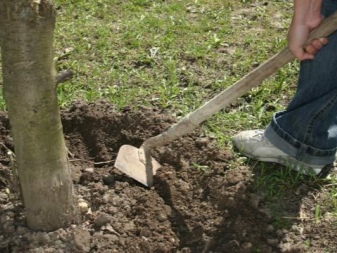













The comment was sent successfully.